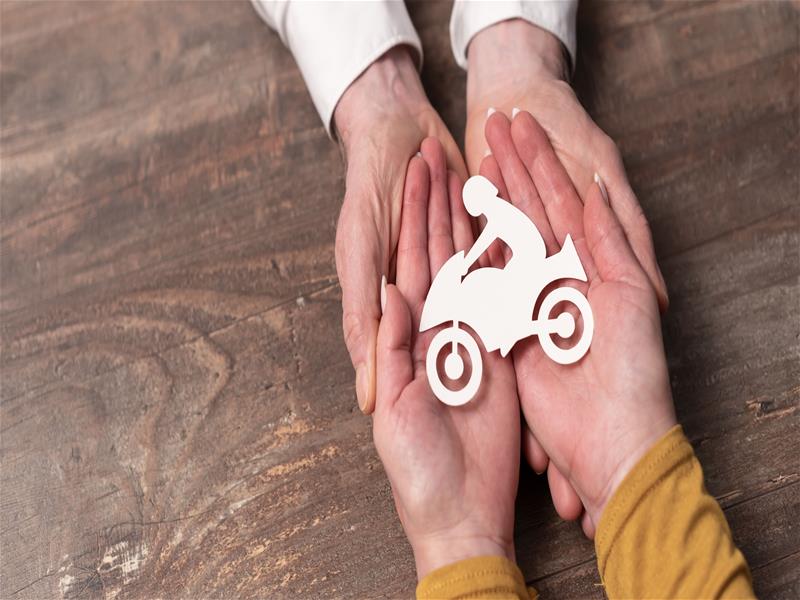Give your bike tyres the love they need this monsoon!
Give your bike tyres the love they need this monsoon!

With COVID restrictions easing around the globe and individuals and organisations getting back to work slowly, your motorcycle will soon hit the roads like before. So, now is the time to make sure that everything is fine with it. Plus, the monsoon season is already here, and might make riding a tad challenging, thanks to heavy rains, waterlogging, slippery streets and potholes. Your bike tyres will particularly bear the brunt of this season, as they are the components that will touch the ground. So, here’s what you can do to care for your tyres this monsoon:
Moisturise!
Tyres that aren’t in use tend to dry out and start cracking, particularly in the hot summer months. Much like your skin, the tyres too, need moisture, especially after being idle for months. It’s recommended to wipe the, with a wet towel to clean the treads and prevent cracks on the rubber surface.
Examine treads
Check the treads on the tyre. The tfint-dreads help in channelling water to prevent skidding. Ensure there’s a depth of at least 2 millimetres on the tread for the necessary grip on slippery roads. Tyres come with a TWI (Tread Wear Indicator) either at the shoulder or at the bottom of the grooves as a raised triangular mark. If the tread depth is below the TWI mark, the tyre is unsafe to ride.
Check pressure
Bike tyres expand in hot weather, and contract in cold temperatures, requiring adjustment in the tyre pressure for optimum efficiency and performance. During the monsoons, the temperate can fluctuate within a single day or over a period of a week. During hot weather, lower the pressure of the tyres to accommodate for the expansion of air inside the tyre. Conversely, during the rains, you can increase the pressure inside as the air tends to contract in cooler tyres. However, make sure you don’t over-inflate the tyres as that can affect handling and manoeuvrability.
Replace damaged tyre
Most motorcycles today use tubeless tyres. Unlike tubed tyres, tubeless ones deflate more gradually in case of a puncture. This may cajole you into riding the bike a few more kilometres before you get it fixed. However, that may damage the tyre, especially if the object that caused the puncture is still lodged in the tyre.Hence, try to fix the tyre as soon as the problem is identified.
Select monsoon tyres
Manufacturers often produce specific tyres for the monsoon months, with enhanced treads and a quality rubber compound. This provides superior grip and stable performance during the monsoon months. However, pick the recommended tyre size, as specified by your bike manufacturer. Choose tyres from a reputed company to ensure minimal problems later.
Check brake components
It’s essential to check the brakes as well, as they work in close connection with your tyres. Look for rust on the disc brakes and check your brake pads for wear and tear. Make sure the brakes are responsive, particularly in the rainy season as braking distances increase.
Practice sensible driving behaviour
Finally, good driving will help in prolonging the life of your tyres. Drive slowly and below the speed limit on slippery roads, as the braking distance increases while grip decreases. Avoid turning into a corner with too much speed as the front will tuck in, resulting in a crash. Shed your speed in a straight line before cornering. This will reduce your dependency on the tyre’s properties. Keep a safe distance from the vehicle in front of you to avoid sudden braking and prevent flat spots on the tyre.
Furthermore, ensure you have an insurance policy for the bike. It is mandatory to avail third-party bike insurance to fend off liabilities against damages to a third party or their property. Or you can avail a COMPREHENSIVE BIKE INSURANCE POLICY to protect yourself and your bike in a holistic manner in case of an accident, natural calamity or manmade event.
Disclaimer: The above information is for illustrative purpose only. For more details, please refer to policy wordings and prospectus before concluding the sales.
Related Articles










 Health Insurance
Health Insurance  Travel Insurance
Travel Insurance  Car Insurance
Car Insurance  Cyber Insurance
Cyber Insurance  Critical Illness Insurance
Critical Illness Insurance
 Pet Insurance
Pet Insurance
 Bike/Two Wheeler Insurance
Bike/Two Wheeler Insurance  Home Insurance
Home Insurance  Third Party Vehicle Ins.
Third Party Vehicle Ins.  Tractor Insurance
Tractor Insurance  Goods Carrying Vehicle Ins.
Goods Carrying Vehicle Ins.  Passenger Carrying Vehicle Ins.
Passenger Carrying Vehicle Ins.  Compulsory Personal Accident Insurance
Compulsory Personal Accident Insurance  Travel Insurance
Travel Insurance  Rural
Rural 











